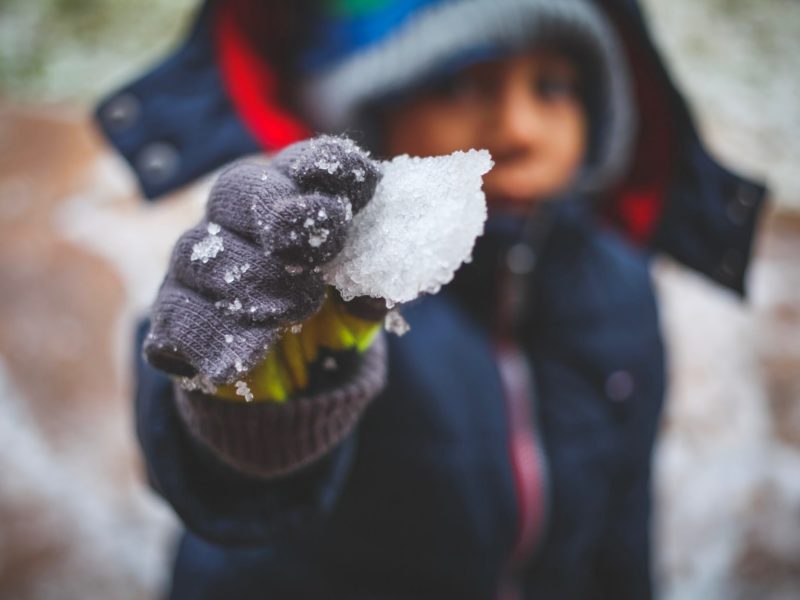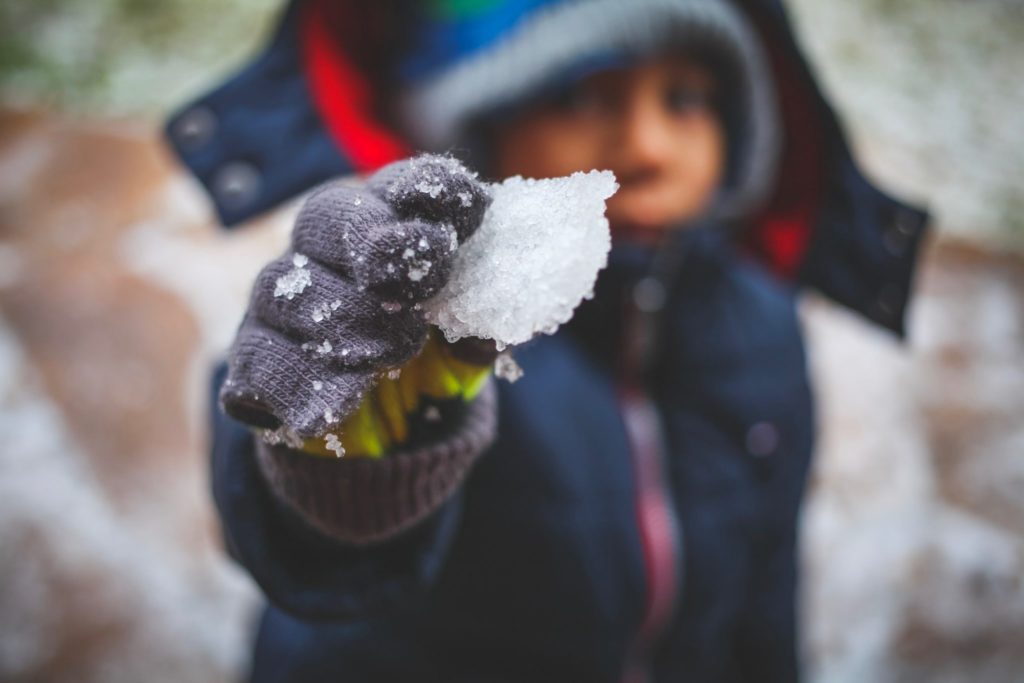Being alert to danger is an important part of winter weather safety for children. In this article, we’ll take a look at winter weather safety tips for kids for those that walk or wait for a bus to school.
What to Wear
No season of the year is clothing more important than winter for children. Improperly dressed children can be at high-risk for frostbite and hypothermia as major risk factors from cold weather. Therefore, make sure that children are dressed in breathable layers, all extremities are adequately covered, and vulnerable areas (such as the ears, nose, and eyes) are protected. Also, make sure that your children’s clothing is water-proof or very water-resistant, as soaked clothing can be extremely uncomfortable and hazardous to your children. If necessary, send your children to school with extra pairs of socks and other clothes to change into so that your children can concentrate on school.
Of course, that covers clothing, but don’t forget the dryness of winter also can present hazards like chapped lips and cracked skin. Chapstick and moisturizer are important items to carry on their person in preventing your child from undue suffering.
Have a Backup Plan
Cold weather can pose real health risks for children on their way to school. Hypothermia, frost bite, and injuries from slips can have serious consequences. Therefore, you should tell your children what to do in case of an emergency. Considering that many children carry smartphones, calling a parent or relative can help save your children in a treacherous position; however, make sure to instruct your children on what the warning signs of winter weather are and where to go in emergencies.
Morning Nutrition
A nutritious breakfast an hour before your child leaves the house can help give them the energy to get through the day and boosts their immunity to germs that lead to the flu/common cold, but a warm breakfast also helps warm your child from the inside. On colder days, giving your children a beverage before they leave the house can help raise their inner core temperature, which means that they’ll feel warmer and be warmer to face the elements.
Waiting at the Bus Stop
If your children are old enough to go to the bus stop without parental supervision, make sure to educate your children about winter weather safety. Vehicles may not have the ability to stop and may skid on black ice and snow, so teach children how to always be observant about their surroundings and not trust that every driver is acting correctly. This includes buses as well as regular motorists, and children should be aware of how to adequately cross the street when leaving a bus.
Running When in Danger
Considering that many child predators stalk bus stop of walking routes that children take in the morning, it’s important to not only inform your children about running away when they sense that they are in any type of danger, but also where to go. For instance, if your child is within running distance to your home, they can make a break for it and lock themselves inside the home. Then, if your home is equipped with door barricades, your child can enable them so that an intruder has no way of getting inside. Practicing this in a few drills can give you the peace of mind that your child knows what to do when danger presents itself.



 Winter Home Maintenance
Winter Home Maintenance